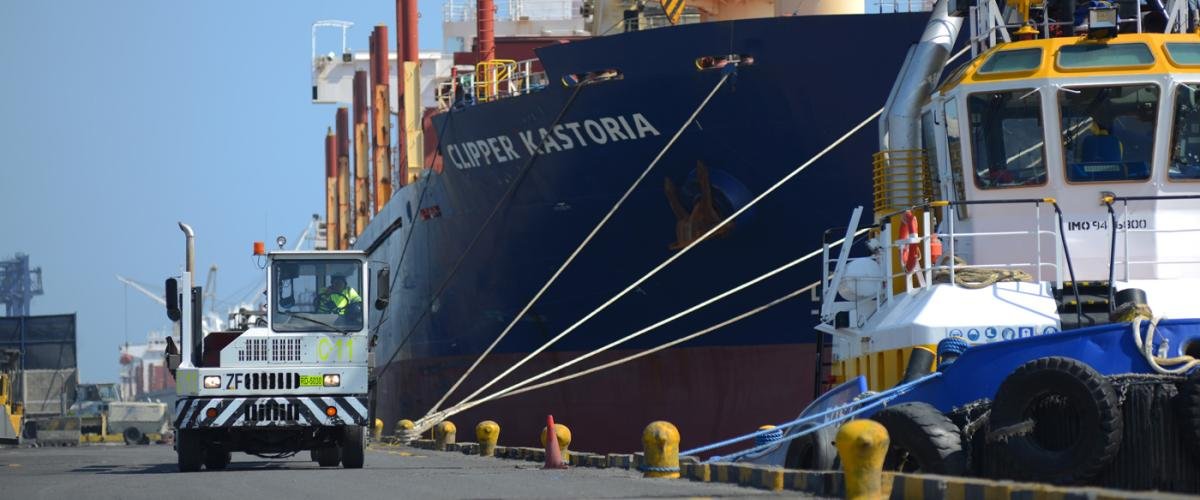PORT SECTOR IN COLOMBIA
Maritime transportation is a fundamental tool for globalization, foreign trade and the supply chain of countries. For this reason, the port system is a fundamental component for commercial activities between economies, since it allows the development of maritime transportation operations in a continuous and efficient manner. Ports are strategic infrastructures for the facilitation of economic development and must provide ideal platforms for the execution of logistic activities oriented to international exchange operations.
The choice of port depends on several factors such as: reliability and guarantee of timely service, as well as tariffs, security, among others.
The profound economic transformations and technological developments of the last three decades have generated a dynamic and competitive port sector. Since the beginning of the last decade of the 20th century, the globalization process, understood as the integration of markets facilitated by the enormous reduction in transportation and telecommunications costs, has changed the dynamics of the maritime transportation sector and, consequently, the other industries that depend on it, which are now navigating in turbulent waters.
There are multiple causes, both endogenous and exogenous. It went from being a sector with high state participation to one of the most deregulated sectors from an economic perspective, but more regulated from a technical perspective and with a significant impact on the competitiveness of countries.
Ports, like the infrastructure serving the sector, depend on its dynamics, although, contrary to this, their business environments are highly regulated in economic matters and very little regulated in technical matters.

NATIONAL CONTEXT
Three decades after perhaps the most successful institutional restructuring in the field of transportation and the opening of the Colombian economy, the evolution of ports and the rapid growth of the Colombian economy have gone hand in hand. Fundamental to this achievement was the issuance of Law 1 of 1991, which established the institutional and conceptual bases of port sector governance: port expansion plans, port operating conditions, regulation of port associations and the works necessary for common benefit, port concessions were created, the state port services company was liquidated, free competition and private sector participation in the provision of services and infrastructure investment were promoted, etc.
Colombia has zoned its port sector into 8 continental and 1 insular zone. In the northeastern part of the mainland, the La Guajira peninsula, adjacent to Venezuela, has a projected presence of 16% in the country's port traffic by 2022, mainly thermal coal for export. Its immediate neighbors, in the east-west direction, Santa Marta and Ciénaga have a 21% share, also mobilizing thermal coal, although the SPR of Santa Marta has an important traffic of general cargo, containers and bulk solids for food imports. On the mouth of the Magdalena River, Barranquilla is a dynamic multipurpose city-port with specialized terminals and a great potential for intermodal operations, the port as a whole, according to information from the Supertransporte and its own projections, will reach a 7% share in port traffic by 2022. Cartagena de Indias, the port city with the longest historical and economic tradition, has taken advantage of its wide and deep bay, as well as its proximity to the Panamanian isthmus and its canal, to develop one of the most important international transshipment operations in the continent, being ranked as the best connected port in America, which makes it the port area with the highest share in Colombian port traffic with 24%. The port area of the Gulf of Morrosquillo, further southwest along the Caribbean coast, has a 16% share, due to the fact that the main hydrocarbon export pipelines terminate there. On the border with Panama, in the Gulf of Urabá, the modernization of banana export-oriented operations has led to the construction of the Antioquia port, a multipurpose terminal with container and bulk cargo import and export operations, which will enter service in approximately 2025.
Read the full article here (Available only in Spanish):
Port Sector in Colombia [PDF File - 1.53 MB]
Visit EMMSAS Website
https://www.multimodal.com.co/
#OrgullosamenteMAMLa #ProudlyMAMLa #EMMSAS #Puertos #Colombia #TraficoMaritimo #Shipping #Ports #Economics #Policy #Management #MaritimeIndustry #Seafarers #GenteDeMar #StrategicAlliances #Partnership #Team #MujerMaritima #WomenInMatitime